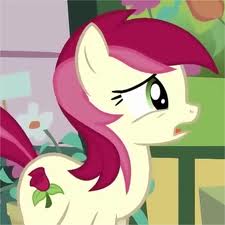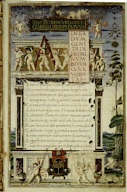
The Scholar
The FLOWER GIRL was the first in the village to discover a dead lizard. It was small and green, as many lizards are, and lay motionless on her table of fresh home-grown roses. Its tongue, long for a lizard’s, hung pitifully from its open mouth and seemed almost to infect with death by association the red rose that it lay against. The flower girl’s customers, who had up until that point been waiting happily in line before her stall, trading jokes and gossips and gazing admiringly at her flowers, quickly dispersed. Flowers that played host to a dead lizard were likely to be poisonous, and if not poisonous, they were most certainly unlucky. The flower girl was left to find a way to dispose of the lizard without further inspiring the public’s ire, as well as to discover where it had come from in the first place.
Two facts more about the dead lizard deserve mention. First, the flower girl found that simply to look on it made her unhappy. Over and above the natural feelings of loss from the customers who had left her, the very act of looking at the lizard invoked in her feelings of grief and guilt, feelings she could not or would not explain. Second, all villagers of age in the village bore a small, immutable symbol on their sides, one that denoted their talent or passion or occupation. The flower girl’s, matching both her shining red hair and her product line, was a single red rose. And this red rose was reproduced in exact detail on the body of the dead lizard.
Deeply disturbed, the flower girl closed her stall for the day and took the dead lizard to the CARETAKER who lived in a hut on the village’s outskirts. The caretaker was a gentle woman, soft of heart and voice, who hated to see any animal hurt or upset. This lizard, dead as it was, came as an especial shock to her, and it was some minutes before she could muster the courage even to tell the flower girl she did not recognize its species, nor its cause of death. But, she added between tears, she did have a friend who might know more.
The SCHOLAR lived in the village library. Her passions were knowledge and communication and organization and connection, and her concern for the flower girl was quickly surpassed by her curiosity about the dead lizard. She accepted the lizard’s body into her library and promised the flower girl she would search every book she had to learn where this lizard had come from, and what had led to its death, and wherefore it shared the flower girl’s mark of the one red rose. The scholar locked herself into her library to research the matter, and the flower girl returned to her stall in the marketplace of the village, and for a time, nothing more of note occurred.
It was the MAILWOMAN who found the second dead lizard, hanging from one of her satchels of letters though she had no notion of how it could have gotten there. The mailwoman’s special symbol was a set of bubbles, and those very same bubbles appeared also on the green skin of the lizard. The scholar rapidly procured an interview with her and, following some rather circular questioning, acquired a timeline of her day preceding the lizard’s discovery.
The mailwoman had arrived at the post office at her usual time, procured her letters for distribution about the village, and left to deliver them under her own steam. She had delivered all the letters addressed to those living within the northwestern corner of the village, and had at that point taken a break to eat some pastries at the local bakery. The mailwoman insisted to the scholar that this pastry break was a quite regular component of her delivery route. Nothing out of the ordinary had occurred at the bakery, and it was not until roughly an hour of uneventful deliveries later that she had discovered the dead lizard. Working off the only other point of data she had, for her research had yet to uncover anything of interest, the scholar asked if the mailwoman had delivered any letters to the flower girl that morning, but was told that no, not only did the flower girl not have any mail that day, the mailwoman had not yet even begun delivering to her area of the village.
Disheartened, the scholar walked to the bakery to discuss the matter with her close friend the PASTRY CHEF. There were few in the village who did not visit the bakery at some point or another, the flower girl among them, and as such it was the scholar’s best lead. Besides, the pastry chef – an energetic, imaginative girl – kept a diminutive alligator as a personal pet, and where there was one small reptile, might not there be one or two others? Such was the reasoning with which the scholar armed herself against the pastry chef, but the pastry chef was adamant in her denial. The cleanliness of a bakery was of the utmost importance, she insisted, and there were absolutely no lizards living anywhere in the building, dead or otherwise. The scholar did perform a cursory examination of the building, but made no further discoveries other than confirming that the bakery was indeed a thoroughly clean establishment. Flummoxed, she returned to her library in hope or dread of the appearance of further data.
It was the third dead lizard that brought the matter to the attention of the entire village, owing in large part to the very outspoken nature of the woman who shared its symbol. This was the DRESSMAKER. She and the caretaker had been relaxing in the village’s beauty salon, as they liked to do on weekend afternoons, when she happened to reach over for her magazine and found herself feeling something of a rather different texture entirely. This turned out to be another lizard, long-tongued and lifeless as the rest, with a perfect replication of the dressmaker’s personal symbol – three beautifully cut diamonds – upon its back. Two long seconds went by, and the dressmaker screamed.
The salon became a place of instant uproar, the dressmaker running about in terror and the caretaker huddling grief-stricken in a corner and the salon’s attendants trying desperately to pacify them both, as well as the other customers who had heard the scream and wanted to know what was going on. The next day City Hall delegated a special taskforce of health inspectors to the salon, who could not find anything of interest until one eager young inspector happened to open a cabinet of old accounting ledgers and discovered a fourth lizard dead among its files.
The symbol on the fourth lizard was never conclusively identified with any particular spa attendant, but the ledgers that the lizard had been found with were brought to the scholar for inspection, and the scholar was able to identify several issues with them. It came out that someone within the salon had been embezzling small sums of money for the last several months, possibly to repay some manner of loan. The official investigation into the embezzlement took some weeks to conclude, but in the meantime, the villagers had decided they understood the significance of the dead lizards. They were signals of betrayal, dishonesty, and guilt. And thus rumors began to grow to explain the significance of the first three lizards.
The dressmaker, it was said, had had a special order of dresses from a very prestigious modeling firm, and had purposefully overestimated the time it would take her to fulfill the order. She, being paid by the hour for her labors, had thus received a greater commission than she would have had she acted honestly, and she had been spending some of it – both the surplus commission and the surplus time – at the salon that day. This rumor was difficult to prove, but the dressmaker’s protestations against it were thought to be somewhat half-hearted, and it became perceived as fact. For a time, the dressmaker’s business suffered.
It came out that an old CHESS PLAYER in the village had been expecting a certain sum of money in the mail the day that the mailwoman had found her own lizard, and when the money arrived, there was less in the envelope than he had been expecting. What the scholar had learned of the mailwoman’s route that day seemed to confirm that his money had already been delivered by the time the lizard had been discovered, indeed only a few minutes beforehand at most. On this suspicion of theft, the mailwoman temporarily lost her job with the post office.
The flower girl’s case did not rest on rumor and supposition alone, for she broke down in tears one day after the other two matters had been unearthed. The flower girl explained that the roses she had been advertising as fresh home-grown roses that day were in fact imported from a distant city; a number of rabbits had demolished much of her crop earlier that season, and so she had been forced to buy her flowers from another source. She had advertised them as home-grown, believing customers would pay more for them that way, and the dead lizard had appeared as she had been about to sell the very first one.
With these revelations, a feeling of great paranoia settled into the village, followed by a rash of further lizard findings and mounting pressure on the scholar to determine their true nature. The CARROT FARMER, who was engaged to two different men without either knowing aught of the other, lay one night with her second lover and discovered a dead lizard beside his bed in the morning. She hurried home to her first lover in repentance, but found a lizard waiting for her there as well. On the other side of the fields the APPLE FARMER, famed throughout the village for her honesty, was profoundly ashamed when a lizard was found near her cow pens. That same day, certain of the villagers suspected that their milk tasted curiously watered down. Both of the farms’ businesses suffered for a time.
The lizards varied in frequency and severity. The pastry chef confessed to embezzling a long series of corn cakes over a period of several years. The CANDY MAKER admitted to having made some of her candies with cheaper and less healthy ingredients without having revealed this to her customers. The JOKE SHOP OWNER was discovered to have underpaid the manufacturers of his products, some of them underage to begin with. The SCHOOLTEACHER revealed that she had not been reading all of her students’ essays before grading them. Other lizards stemmed not from actions, but merely from feelings. One day a BUSINESSMAN’S DAUGHTER managed to produce a dead lizard while feeling particularly superior to her country-bred classmate. A STREET MUSICIAN spent five days wallowing in laziness and an unwillingness to perform, and was rewarded with another lizard at the end of the five days. A renowned TENNIS PLAYER lost a match to an unfamiliar opponent and a lizard appeared even as he stewed with jealousy.
A scandal briefly erupted when the MAYOR was discovered to have signed a highly lucrative – and illegal – contract with a certain construction agency. Her opponent in the next election gathered a flock of his supporters about her office to call for her to resign. The mayor stepped out of her office, looked sternly at them all, and took out a long list. On it were records of the lizards produced by each and every one of her opponent’s supporters, and the actions or beliefs that had accompanied and produced each one. When she had finished reading from her list, she was alone, and she returned calmly to her day’s work.
Through it all, only two groups could really be said to be benefitting from the pandemic of lizard deaths. The first, a far more minor player, was a group of three ENTERPRISING YOUTHS who struck up a small business disposing of the dead lizards incurred by their fellow villagers. The second were all the places of entertainment that the villagers would spend their money on with various levels of comfort and self-respect. The public house, the strip club, the casino, even the bowling alley: all these places welcomed the sudden tangible manifestations of their customers’ guilt, tied as they were to the special symbols that each villager bore upon his or her side. These establishments competed with one another to acquire the lizards of the most respectable the village had to offer, being thus able to boast that they offered the highest quality – and basest – entertainment of them all. The mayor, the scholar, and other seeming bastions of respect and integrity were courted strongly by such establishments, whose owners knew greedily that customers would flock to come and drink or gamble where even the upright caretaker had succumbed for one brief moment to the glory of temptation. It was rumored that one such establishment had even a lizard belonging to the princess of the land herself, but this was said to be kept under lock and key and shown only to the very most highly paying skeptics.
At last came the long-awaited day when the scholar announced that she had discovered the nature of the dead lizards. She had found them mentioned in a dusty old book of uncertain origin, and she was ready to share the results of her research with the village. Young and old, all gathered around her at her library as she began to explain the mysterious corpses that had appeared among them.
The corpses were of a species of magical creatures known as Karma Chameleons, beings of great mystic power from a far off land who lived on the positive energy and actions of those around them. They were native to the countryside around the distant city that the flower girl had ordered her roses from, and the scholar suspected – although, she emphasized, their exact origins did not especially matter – that some small number of the chameleons had managed to ride to their village along with the shipment of flowers.
Karma Chameleons took some time to mature, explained the scholar, and were invisible until they reached their full adulthood, or until their death, whichever happened first. And adult chameleons brought with them many great benefits. Their kiss, as she explained happily to the NURSE, could cure many common diseases. Many small parasitic creatures, she gleefully told the apple and carrot farmers, would stay away from a farm that was under the chameleons’ protection. Their tears, she told the old chess player with a warm smile, could extend one’s life. Their list of supernatural blessings went on and on.
The scholar further explained that the chameleons grew from, and in turn inspired, all the positive actions and emotions belonging to their society. Honesty, laughter, kindness, generosity, loyalty, fellow-feeling, courage, empathy, piousness, and so on. But they could be killed by all that was dark and wicked in their world – dishonesty, hatred, envy, pride, idolatry, greed – and this was what was happening to the chameleons around them. One by one they were being killed by hateful actions or sentiments – and bearing forever the symbol of the one who had killed them, as if in rebuke – but at a moderate enough pace that they continued to breed and maintain their numbers in time for more of them to die later on. They seemed to have reached a state of effective equilibrium, explained the scholar, and so there were two obvious things the village could do now.
The first, of course, would eliminate the problem entirely but would also be a great loss to their community. They could simply become crueler and wickeder and more sinful until there were no chameleons left at all, and then they would never have to worry about dead lizards appearing beside them ever again. But that was ridiculous. The chameleons, the scholar said, were a beacon of hope beckoning them forward to a more glorious and beautiful life to come. All they had to do was be the very best they could possibly be, and the Karma Chameleons would flourish and grow to adulthood around them, in turn granting the villagers all their mystic powers and protections. And whenever anyone did sin or act hatefully in some way, their mistake would be made evident for all to see, and they could be chastised or reeducated as the circumstances warranted. Knowing both the rewards that awaited the kind and the shame that would betoken the wicked, surely their entire village would grow to enter a new state of perfect friendship and equality. And the assembled villagers cheered.
That night, while the public house and the casino and the strip club and the bowling alley and the other such establishments kept their lights fully on and their doors wide open, all other doors in the village were shut fast. The villagers retreated to their homes, by themselves or with their families, to consider the possibilities the scholar had placed before them. They considered their present lives, and also the lives of the villagers around them, and also the lives the scholar believed that they all could come to live. They thought of the burning beacons of shame and rebuke that were the dead lizards, and they weighed this against the chameleons’ many wondrous abilities that the scholar had listed. The nurse thought of the kisses that could defeat so many diseases, and then she wondered at what that would do to her own business, and the respect she enjoyed from her patients, and her pride in her own ability. For a moment she felt a pang of angry resentment toward the mystic chameleons, and when she looked down, a dead lizard lay there beside her bearing her own sign of a red cross.
As the night progressed, slowly, one by one, the doors of the houses of the village began to open. The public house and its cousins began to fill. When the night had ended, not a single Karma Chameleon was left living anywhere in the village.
Time went by, and the flower girl and the farmers and the dressmaker and all the rest returned to their previous levels of success, no longer shunned by the villagers around them. The mailwoman was given her job back, and everyone went back to living the way they were used to living and thinking of their neighbors the way they were used to thinking of them. Not one of them, not even the scholar, mentioned the Karma Chameleons ever again.






















Ohmygoshohmygoshohmygosh YES.

I don't understand it and at the same time I do.
Yow. Very whale dong, as the kids say.
D'A
This was amazingly written, but the ending felt a bit rushed.
Well done though, it was extremely entertaining to read and I loved the concept.
I really didn't love the narrating style, nor do I think it was creative and original... wait, is this a dead lizard before me?
Jokes aside, thumbs up, good Sir. I found your story strangely Mark Twain-esque (though I haven't read MT in original English).
Sadly, I can't offer you any real constructive criticism, though, as opposed to PancakeTime, I don't think the ending is rushed. It's just fast enough to leave the reader wondering about the twist.
Oh, thank you so much for getting that song back in my head...
Still, I gave an actual guffaw at that revelation, and the tale was clever indeed!
It's cool, and I really like it. The idea? ABSOLUTELY PERFECT!
hmmmm, well grade A on the concept and how it ended, that's humanity for ya so a big thumbs up.
"don't judge me bro!"
While it is true that is its not right for people to go around "judging" each other as it were "don't judge me" is just an easy out to try and keep someone from confirming what you already know about your own actions.
We would rather get away with our sins then be blessed for our good deeds in most cases and will often paint the messengers as villains or try to eliminate them just to live as we please rather than as we should.
I don't think this is an especially evil ending. The idea that every action must be policed, every deviancy must be squashed! Would the blessings of the adult chameleons be worth the cost? It isn't clear. It is certain that there would be a cost, for the chameleons represent one view of what is right, and yet have no monopoly on truth. Honest independent questioning should not be abandoned for the first prize to come along.
Huh.
Well, firstly, I have to applaud you for the original concept. That's not something I would have thought of, but it works very well with or without the setting of Equestria. Poor lizards...
Secondly, I like the ending, despite the fridge horror of having wiped out a harmless becoming-local population, because it leaves, as the comments show, the good or bad of the situation up to the reader. Also, the style of writing is very interesting.
893898 "it works very well with or without the setting of Equestria."
If you notice, the setting of Equestria is completely optional. There are no mentions of hooves, ponies, place names. It's your choice to fill them in while reading.
895968 That I did.
I think I actually feel a small amount of rage towards this story, I think because i disagree, and yet I must give it a positive vote, and keep it marked as a favorite. This was very well done and it made me think despite the fact that I disagree.
KEEP WRITING!
I'm not sure what hurts worse here, the pessimism or the accuracy. In any case, this was rather hope-crushing. Excellently written, but devastating. Thank you? Possibly?
(Also, I'm surprised those ENTERPRISING YOUTHS didn't try to reach new pinnacles of vice in the hopes that their cutie marks might be glimpsed on the backs of chameleon corpses.)
Wow
u wot m8
I have to admit, I love the narrative, but that pop culture reference almost killed it for me. And yet, you made it work as world-building, and I just now remembered what Diamond Dogs are named for, and so it ultimately works. This is a very singular piece, well done. :)
Love it.
746238
You mean "dork?"
895968
I noticed that, with something like "strip club" in the mix. But I was wondering how else you could match someone to a lizard without the identifying Cutie Mark.
Hey, I wrote a review for this fic. It can be found here.Hey, I wrote a review for this fic. It can be found here.
6115632 Thanks!Thanks!
Uh... well, this was certainly thought-provoking. And I do have some thoughts on it, although conflicting ones.
Firstly I disagree with the idea that the lizards may just not be a good thing, and that the ending is somehow... a defendable outcome, from Ponyville's perspective. I think it is definitely a failure, and a tragic one at that.
Essentially, what the lizards do is to hold everyone publicly accountable for their moral shortcomings, and reward a society if it betters itself due to that accountability (or if it has been good in the first place). In that way, I'm most inclined to read it all as a sort of moral test that Ponyville fails.
And that... to me, is inherently weird. I immediately associate all the good things with pony society, and always compare it to human society, I can't help that. But, humans aren't even brought up here. Still for me, since I consider Equestria everything we should be but are not, and Ponyville the pinnacle of that better society, it makes it... disturbing to read about something where even Ponyville utterly fails.
Which then makes me think about whether I think they would fail in this way, and I think they... might. The amount of corruption you're portraying here seems pessimistic to me, but not unreasonable; the three examples I remember (narrator, Rarity, Ditzy) are all pretty much on the edge. Would Rarity really cheat like that? Well... maybe. The problem is, she thinks she can do it with no consequences, and that she's probably underpaid generally. Ditzy probably really needs it, and it was from some rich guy who doesn't really need it.
Oh, and there was Applejack, too. That one I don't buy. No way she would cheat like this.
Moving on from that, one problem I have that sort of ruins that way of reading it is that the Lizards are also triggered by envy, which is... incoherent. Because envy is. not. a. sin. I don't even understand why anyone would think that. Envy is completely understandable, not inherently negative, and doesn't hurt anyone. So... I don't know. I don't really like this part of it, because it sort of ruins the moral authority of the, well, test, but it is clearly not enough to make failing it the right option. It does make the failure much more understandable, though.
Yeah. I don't know. I strongly disagree that accountability for crimes should be a bad thing, but I don't think the story is saying that. Or maybe it is? I hope not.
(I know nothing about Nathaniel Hawthorne, so this is purely based on the story itself.)
I adore the writing style here. Maybe I'd get tired of it in a much longer tale, but here, it's just so... effective as a way of conveying and painting the narrative. So, wonderful.
The issue with the Karma Chameleons (I'm fairly neutral on the reference) is that they need not be so terrifying. The pragmatist in me is screaming out that Ponyville should simply establish a rule that a dead chameleon cannot, in itself, be used to convict anypony of guilt, though they could be used as an investigative tool. Violations of etiquette or empathy, but not of law, should not be punished at all.
The thought of anyone committing sin that they themselves know is wrong -- purely as spite to another's judgement -- is abhorrent. Do right because it is right; refrain from wrong because it is wrong. And if a disagreement arises about which is which, a chameleon should not be the authority to consult. These simple rules should make any rational being know which choice to make.
Ponyville made the wrong choice. A tragedy this is.
And a fantastic story this is, too. Faved.
*reads*
*blinks*
Creates bookshelf and shoves this on here.
Ergh, you did a real good job writing this; I'm definitely getting flashbacks to The Scarlet Letter.
I can appreciate the writing, but I never really liked The Scarlet Letter, Hawthorne came across as particularly whiney IMO.